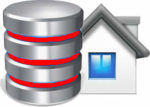Search Across a Variety of XML Data
In recent years the use of XML has grown explosively; as a result, an enormous amount of information is now stored in XML, both in XML databases and in documents on a filesystem. This includes highly structured data, such as sales figures, semi-structured data such as product catalogs and yellow pages, and relatively unstructured data, such as letters and books. And even more information is passed between systems as transitory XML documents.
XQuery 1.0 is the tool that makes it easier to search, extract, and manipulate this information. The query language, designed by the W3C, allows you to select the XML data elements of interest, reorganize and possibly transform them, and return the results in a structure of your choosing. According to Priscilla Walmsley, author of XQuery (O’Reilly), “there are as many reasons to query XML as there are reasons to use XML.”
A few examples of common uses for the XQuery language are:
Extracting information from a relational database for use in a web service
Generating reports on data stored in a database for presentation on the web as HTML
Searching textual documents in a native XML database and presenting the results
Pulling data from databases or packaged software and transforming it for application integration
XQuery was written for query writers who have some knowledge of XML basics but not necessarily advanced knowledge of XML-related technologies. It can be used as a tutorial, by reading it cover-to-cover, and as a reference, by using the comprehensive index and appendixes.
The book provides complete coverage of the XQuery 1.0 standard that was finalized in January 2007. In addition, it provides the background knowledge in namespaces, schemas, built-in types, and regular expressions relevant to writing XML queries. Contents include:
A high-level overview and quick tour of XQuery
Information to write sophisticated queries, without being bogged down by the details of types, namespaces, and schemas
Advanced concepts for users who want to take advantage of modularity, namespaces, typing, and schemas
Guidelines for working with specific types of data, such as numbers, strings, dates, URIs, and processing instructions
A complete alphabetical reference to the built-in functions and types
Whether you’re coming from SQL, XSLT, or starting from scratch, this carefully paced tutorial takes you through the final 1.0 standards in detail.
